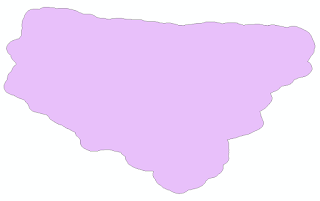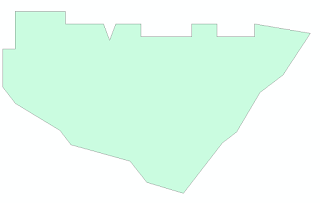Final Project: Hydrologic Effects of Improved Agricultural Practices in The Western Portion of the Ames Fork in the Pecatonica Watershed
Hydrologic Effects of Improved Agricultural Practices in The Western Portion of the Ames Fork in the Pecatonica Watershed
The goal of this project is to determine if a similar trend
of narrowing Bankfull Width in the headwater reaches, and slight widening in
the downstream reaches of watersheds has continued in Southwestern Wisconsin,
Specifically in the Western Ames Fork of the Pecatonica River Watershed (Figure 1). In the mid 1930s the SCS soil conservation services implemented improved agricultural practices in an effort to protect the land and try to revert land back to presettlement times where streams were healthy in Wisconsin. I previously did similar research in the Galena River
watershed (Figure 2), where data from 2017 was compared to data found in literature that
compared linear regression lines from 1940 to 1979. In 2017 myself and a few
other students from Missouri State performed field work in the Galena
Watershed, where lead and zinc was being traced through sediment samples.
Additionally to collecting soil samples, Bankfull Width was determined at each
site. This measurement was the basis for my study. Bankfull width will again be utilized, however measurements were collected through imagery rather than field work.
 |
| Figure 1:Study Area for Western Ames Branch |
Outline of Goals
Digitize study area
Digitize sample locations
Clip raster imagery to study area
Delineate watershed in study area
Delineate streams
Digitize drainage areas at each
sample site
Measure bankfull width at each
sample site
Create a linear regression to
compare to data from literature
Literature Review
Frank Magilligan (1985) conducted
a study where he compared data from the soil conservation services (SCS) to his
own data in 1979. Both sets of data compared bankfull width to drainage area
(Figure 3). Magilligan noted in his work that upper reaches of the watershed
became narrower in 1979 than in 1940. Knox (1977) noted that larger more
frequent floods occurred in the upper reaches of watersheds, and he attributed
this to poor agricultural practices. Gebert and Krug (1996) noted that
magnitude and frequency of floods throughout the watershed system have
decreased, and they attribute this to improved agricultural and land use
practices such as contour farming (Figure 4) and strip cropping.
 |
| Figure 3: Frank Magilligans Linear Regression coparison. |
 |
| Figure 4: Contour strip farming, an improved agricultural practice. |
In the digitizing process three data sources were used, Lafeyette county Wisconsin LiDar with an underlying Topographic Basemap, (Figure 5) and a 30 arc second DEM of North America (Figure 6).
 |
| Figure 5: Lidar DEM overlayed on a topographic basemap, this allowed for ease in digitizing, when determining drainage divides in the topography of the study area. |
 |
| Figure 6: Map showing the 30 arc-second DEM of North America. |
Methods
Digitization, and statistical analysis
 |
| Figure 7: Digitized study area |
 |
| Figure 8: Sample locations |
 |
| Figure 9: measuring process used for determining Bankfull Width. |
 |
| Figure 10: Each drainage area above each sample location is digitized. |
 |
| Figure 11: All polygons layered on top of each other after being merged. |
Watershed and Stream Delineation
In this next section, a stream delineation and watershed delineation was performed through the use of Model maker, and numerous different tools (Figure 13). First the study area (Figure 14) was buffered by .5 kilometers (Figure 15), to allow the watershed delineation to be more accurate. Then the DEM was clipped to the buffered study area (Figure 16), then a fill was performed to get rid of sinks within the image (Figure 17). Next a Flow Direction raster was created (Figure 18), followed by Flow Accumulation (Figure 19), a conditional argument (Figure 20), Stream order (Figure 21), stream to feature (Figure 22), basin (Figure 23), and finally raster to polygon (Figure 24).
 |
| Figure 13: Full model |
 |
| Figure 14: Study_Area |
 |
| Figure 15: Study_Area_Buffer1 |
 |
| Figure 16: DEM_Buffer_Clip |
 |
| Figure 17: Fill |
 |
| Figure 18: Flow_Dir |
 |
| Figure 19: Flow_Accumulation |
 |
| Figure 20: Net_50k |
 |
| Figure 21: Stream_order |
 |
| Figure 22: streamfeatures |
 | ||
Figure 23: Basin
|
Results
A bankfull width to drainage area linear regression was created (Figure 25). The results of the comparison were hopefully going to show a positive linear slope, this would mean that my hypothesis of improved agricultural practices is shaping the streams and reverting them back to a similar state as presettlement streams prior to people living in Wisconsin. However this was not the case, and i believe it is due to performing the study over too small of a portion of the watershed.
The stream and watershed delineation produced two outputs shown above in FIgures 22 and 24. these were used as a visible comparison to see if my digitized area was similar to what the GIS could produce through a model.
 |
| Figure 25: Linear regression between bankfull width and drainage area. |
Sources
Gebert, W.A., and
Krug, W.R. 1996. Streamflow trends in Wisconsin’s Driftless Area. Journal
of the American Water Resources Association 32: 733-744.
Knox, J.C.
1977. Human impacts on Wisconsin stream channels. Annals of the Association of
American Geographers 67: 323-342.
Magilligan,
F.J. 1985. Historical floodplain sedimentation in the Galena River Basin,
Wisconsin and Illinois. Annals of the Association of American Geographers 75: 583-594
DEM Source
National Aeronautics and Space Administration (NASA),
the United Nations
Environment Programme/Global
Resource Information
Database (UNEP/GRID),
the U.S. Agency for International Development
(USAID), the Instituto Nacional de Estadistica Geografica e Informatica (INEGI) of
Mexico, the Geographical Survey
Institute (GSI) of Japan, Manaaki Whenua LandcareResearch of New Zealand, and the Scientific Committee onAntarctic Research
(SCAR).




Comments
Post a Comment